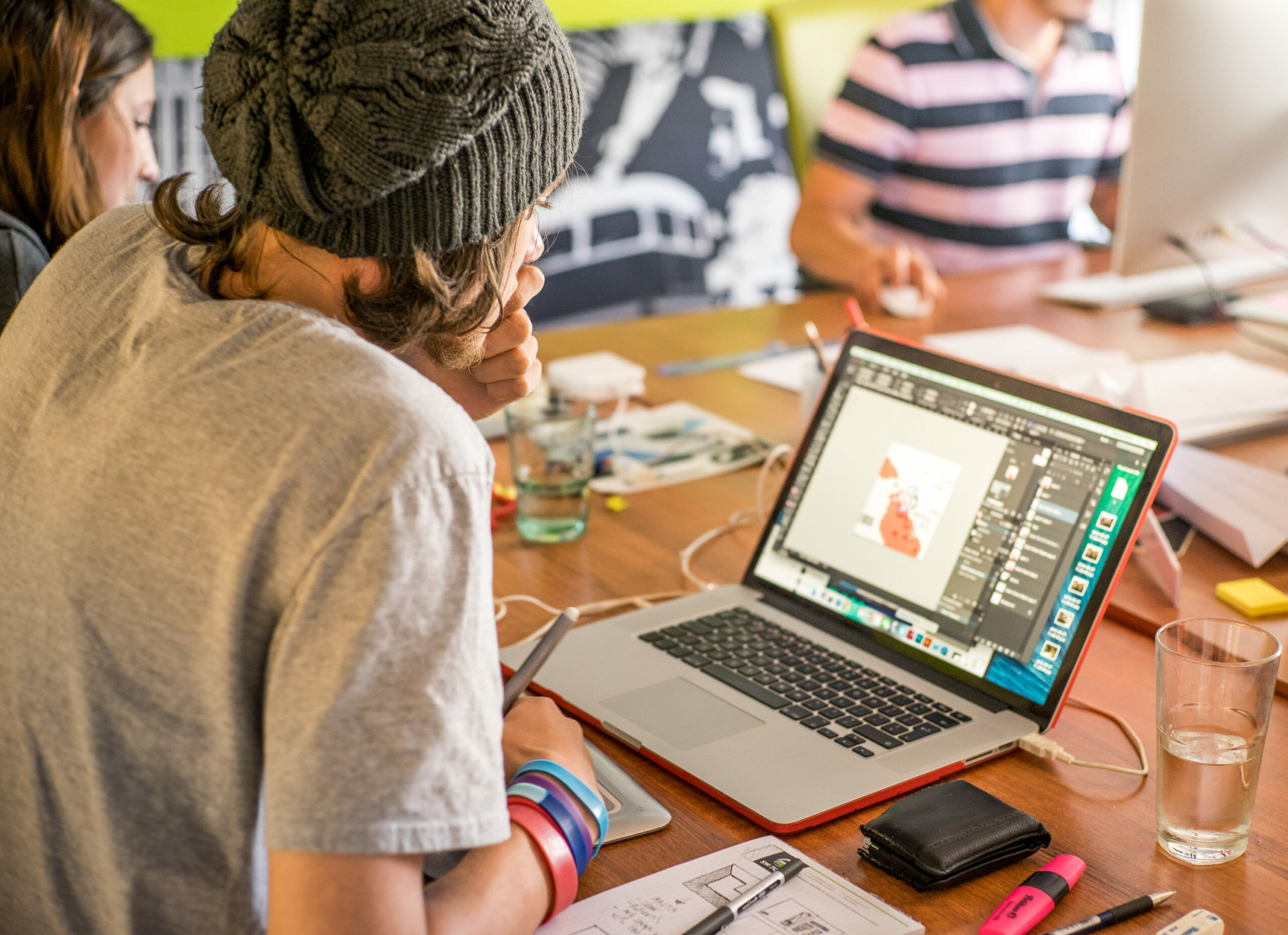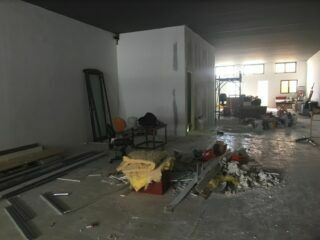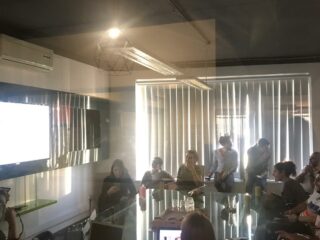Portrait of a Copywriter, Pre-Switch
As a copywriter, I do a lot of things. I write blog posts about amazing feats of human strength and dexterity, interview my colleagues when they’re trying desperately to get a drink from the water-cooler, and trawl the Internet looking for interesting facts and figures.
So far, so standard – but as it turns out, copywriting at Switch had a tendency to veer down the road less travelled. Here’s a time-line of my experiences, Pre Switch:
- Write content about food.
- Write content about places.
- Edit grammatical errors in essays.
- Write CVs.
- Edit resumes.
- Occasionally cry on the discovery of a typo post third edit run .
I did a lot of copywriting for big companies on an anonymous basis; think factory work, but on a grander scale. This then became editing academic essays: philosophy, social studies, English, mathematics, interior design. I stamped my mark all over anything and everything I could get. When that career got boring – there’s nothing like ten hours of solitary computer work to really turn you into a people’s person! – I applied for the job I have now, which is Switch copywriter, office blogger, editor, and obsessive bullet journalist.
Portrait of a Copywriter, Post-Switch
I’ve been at Switch a little over a month now, and here’s everything I’ve done so far:
- Write content about food.
- Write content about places.
- Get pulled into a brainstorming session for a new brand (no hints to what it is!).
- Edit grammatical errors in blog posts.
- Discover Facebook and Instagram have completely different writing styles.
- Relearn everything I knew about social media marketing (not that I knew a lot to begin with).
- Go downstairs to carry heavy stuff upstairs.
- Devour everything in the kitchen in between bouts of manic typing.
- Contribute to a naming exercise for a new brand
- Contribute to a naming exercise for new products.
- Learn how to name a brand and products.
- Hone multiple writing styles in one afternoon.
There’s more, but I’ll be honest with you: it gets a little bit more esoteric after that. Let me condense this into an easy-to-understand list, because everything I thought I knew about copywriting was completely, absolutely, entirely wrong.
All in a day at the office.
- There isn’t really a structure to my day. Mostly, my work is in the middle: after the brand is finalised, but before visuals are created; I can also get called in again to double-check everything before the final result.
- Copywriting for social media is a completely different beast to anything in writing ever. It’s determined by brand voice – in fact, it is brand voice – but shrunk down into catchy bite-sized pieces that won’t overwhelm Facebook scrollers or people just on Instagram for the puppies and kittens. Because I’m used to writing at length, learning to cut down the chaff and still bring out the personality was the most fundamental thing I worked on.
- Voice, voice, voice. In a day, I’ll write for anywhere from three to six clients, each of them with a distinctive brand voice and style. You have to learn to flip from one tone of voice to the other seamlessly, without breaking in between or the work will pile up – and fast! This is my favourite part of the job: getting to chop down a brand into what it sounds like, what it wants to be to other people, and bring that across to others.
- Copy is everything – and I don’t mean that figuratively! I’ve been called into brainstorming sessions because they need my input on how things are going to sound, how things are going to read, what the text is going to feel like. My job, technically? Write things. My job, specifically? Everything I get asked to do – which can be ‘find out sixteen interesting, obscure facts about the Maltese language’ to ‘evoke the spirit of Romantic poetry in this description for tire cleanings’, and anything and everything in between.
- Asking people questions face to face will put them on the spot. Email surveys are your best friend, and more accurate to boot!
- Things will crop up. You will be in the middle of something else. Rescheduling is almost absolutely certain. This is the bread and butter of my day, because that’s what happens in a digital marketing agency. Jobs speed in, and you reshuffle the day until you can finish the number one priority first.
- Everyone will be delighted to talk about their animals, their favourite hobbies, their earliest memory, all the friendly stuff! This puts people at ease, and it’s very important for getting them to relax and open up.
- Time is an illusion, but deadlines are not. I’ve been at my desk for eight hours constantly, only popping up for air when Pablo roots in my bag for food, or the smells from the kitchen become too delicious to resist. Deadlines, however, are very, very, very real, whether self-imposed or not. I find giving people a ballpark estimate of when they can expect their text helps me keep my day organised.
- Writer’s burnout strikes when you least expect it, and takes a while to clear out. My job is to primarily add words to blank paper, and therefore this is a problem.
- Stuck? Talk to someone! Maybe this is because I worked, for very, very long, in a completely solitary field. At Switch, projects aren’t really manned by A Person, but instead by Many People. At one point, your brand has been guided and affected by everyone in the company, and when I’m stuck, other people won’t be. Finding out what their perspective is always helps.
- If your text is going on an image, a gif, or a picture, you will most probably have to redo it. The designers will tell you it is too long. When writing for visual media, make it short and snappy – your designer friends will thank you.
All in a day at the office.
What else have I learned? The food culture here is strong – weekly takeout lunches are a very big deal (I also organise the lunches). People will come up to you and tell you exactly what you did wrong – in a friendly way. People become interested. They want to know how my job works, and how it’s different from theirs. Everyone’s working on projects that seem fascinating, from the snapshot-glances I get of their screen as I’m walking past with the third cup of tea in an hour (I drink way too much caffeine daily).
You can speak your mind: this is the part that took me the longest to understand. I worked in fields where my job was to follow the English language to the letter, and rein in creativity as much as possible. In creative fields, that doesn’t really work as well as you’d expect, and if a piece of text gets back to me with corrections, I can and do explain why I wrote what I wrote.
Taking it a step further.
Collaboration and compromise are big things in the office. I’ve been told my text is too long for images, too short for blogs. Can I change the tone or make it sound snappier? More than half the time, the changes are valid. However, I’m also comfortable to say that I can tell my colleagues that what they want isn’t viable; I can tell them it doesn’t work, or would have repercussions. I can tell them that the way they’re seeing the brand doesn’t match the tone of voice I have in the guidelines and in the pre-existing material. It’s easy to tell them what I think would make it sound better. I can also tell them that they’re right, but I don’t get it, and could they explain to me how to make it sound closer to what they want?
In the end, it is all about personability, being on-board with what’s being done, talking with different people and coming up with something that tells a better story. It’s fun. Certainly, it’s different.
It’s Switch.





